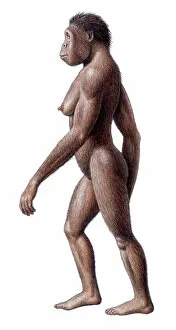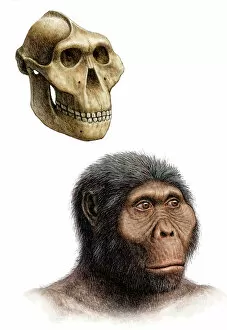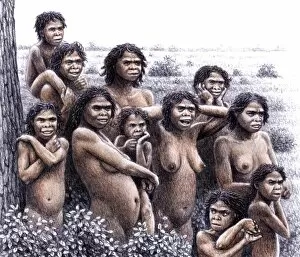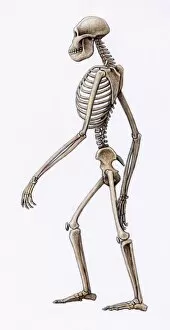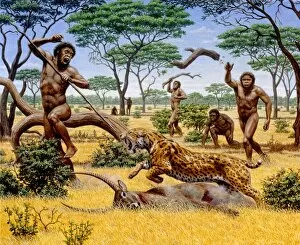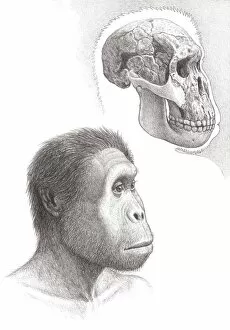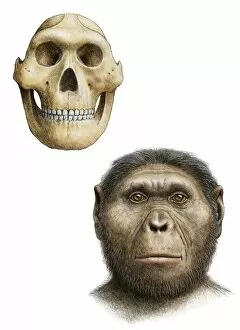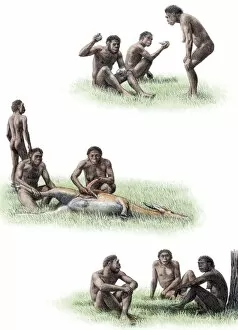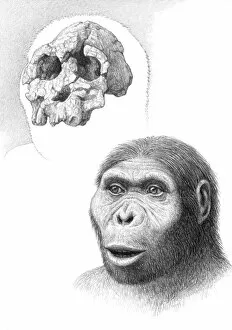Pilocene Collection
In the Pilocene era, our ancient ancestors roamed the Earth
For sale as Licensed Images
Choose your image, Select your licence and Download the media
In the Pilocene era, our ancient ancestors roamed the Earth. Meet a female Australopithecus africanus, gracefully navigating her surroundings with intelligence and curiosity. But danger lurks in every corner as a scimitar cat launches an attack on a vulnerable hominid. Meanwhile, another species of early human emerges - Australopithecus boisei. With their robust features and powerful jaws, they adapt to survive in this harsh environment alongside Homo ergaster females and their young ones. Homo ergaster hunting groups band together for protection against predators like the fearsome sabre-toothed cat depicted in artwork C017 / 0693. These early humans showcase their resourcefulness and teamwork as they navigate through challenging landscapes. The fossilized remains of Australopithecus africanus skeletons serve as reminders of our shared ancestry with these remarkable beings who walked before us. Homo ergaster stands tall among them, displaying advancements in tool-making skills and cognitive abilities that set them apart from other hominids like Homo rudolfensis. Amidst this prehistoric world, giant tortoises roam freely, showcasing the diversity of life during the Pilocene era. And let's not forget Paranthropus robustus - another branch on our evolutionary tree - known for its strong jaw muscles adapted for chewing tough vegetation. As we delve into the mysteries of Pilocene, we uncover glimpses into our own origins and marvel at how far humanity has come since those ancient days.

